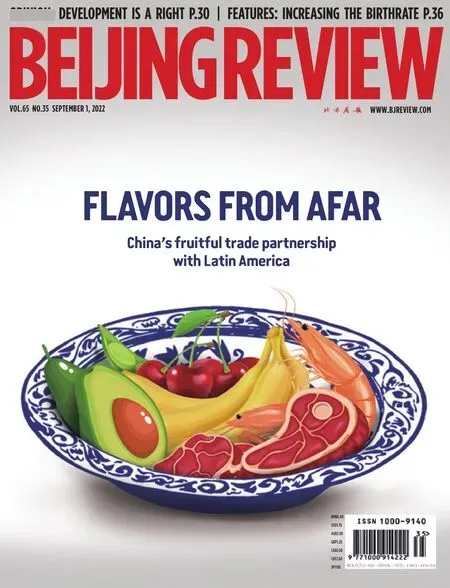The Fentanyl Facts
By Liang Xiao
Fentanyl, a synthetic opioid similar to morphine but 50 to 100 times more potent, was originally developed as a powerful prescription medicine to treat severe pain, especially after surgery and in the advanced stages of cancer. Yet over the past two decades, fentanyl has become ubiquitous across the United States,transforming the illicit drug market and becoming a major contributor to fatal and nonfatal overdoses. According to the U.S. Centers for Disease Control and Prevention (CDC) Vital Signs report, released in late July, 91,799 drug overdose deaths occurred in the U.S. in 2020, marking a year-on-year increase of 30 percent.The CDC blamed illegally manufactured fentanyl and fentanyl analogs for the increase.
As the biggest producer and consumer of fentanyl, the U.S. accounts for 5 percent of the world’s population but consumes roughly 80 percent of its opioids. But instead of exercising effective control over related substances or addressing the issue of domestic demand, the U.S. has claimed on several occasions that “fentanyl precursors used by drug trafficking organizations originate in China.” The fact is, the U.S.has only itself to blame for fentanyl abuse in the country.
There are two types of fentanyl: the pharmaceutical type and the illicitly manufactured one. In China, pharmaceutical fentanyl, as well as other prescription medicines, is strictly controlled. However,the U.S. has an established tradition of prescription painkiller abuse. Since the 1990s,a complete chain of pharmaceutical companies, medical representatives and doctors has gradually taken shape and coupled with unsuccessful government regulations, this has led fentanyl, together with other synthetic opioids, to become a social plague.
On the other hand, most fentanyl-related overdoses today are linked to the illegally manufactured type. Moreover,other substances are often laced with the synthetic opioid because of its extreme potency, making them more powerful, more addictive—and more wallet-friendly.Fentanyl’s wholly synthetic nature can produce a number of derivatives, making it difficult for any drug enforcement administration to track down each and every one available on the market. A large percentage of illicitly manufactured fentanyl in the U.S., including active pharmaceutical ingredients and preparations, is believed to be produced in international underground synthesis laboratories.
During his 2016 presidential campaign, Donald Trump promised to end America’s opioid crisis. Unfortunately, on his watch, overdose deaths flattened in 2018 and then surged again to record levels. At the Group of 20 Summit in Argentina in December 2018, the presidents of China and the U.S. reached an important consensus on antidrug cooperation. Six months later, on May 1, 2019, China had placed the entire class of fentanyl-type drugs and two key fentanyl precursors under a controlled regulatory regime.
By late 2021, China had added another 37 drug precursors and ephedrine-related substances to the list. In addition, China has taken a host of measures to crack down on the trafficking of fentanyl and other scheduled chemicals to certain destinations, including the U.S.
The field of counter narcotics comes with the so-called “balloon effect,” or the negative consequence of an action taken against a particular aspect of the drug market. The effect is similar to squeezing a latex balloon—when the squeezed area shrinks, the other part of the balloon expands. This basically means that as long as there is market demand, drug production that is strictly regulated in one place will move to another place with looser supervision. Although China is now the No.1 country in the world in terms of fentanylrelated substance control, huge regulatory loopholes remain in the U.S., where fentanyl abuse problems are deteriorating and causing a mounting death toll.
Once again, the U.S. uses China as a scapegoat. On August 5, in protest against U.S. House Speaker Nancy Pelosi’s visit to China’s Taiwan region, which violates the one-China principle and challenges China’s territorial integrity and sovereignty, China announced the cancellation or suspension of a series of cooperation channels with the U.S., including counternarcotics collaboration. Rahul Gupta, Director of the White House Office of National Drug Control Policy, said this was “unacceptable” and insisted China has played and “must play a key role in helping disrupt the illicit flow of drugs like fentanyl and their precursor chemicals.”
The fact is China has never ceased its international anti-drug cooperation. Its control over fentanyl-related substances remains tight. From August 4 to 5, the Second International Forum on Drug Policy (2022) took place in Shanghai,themed The Fentanyl and Other Synthetic Opioids Crises: New Challenges and New Responses. More than 2,000 experts, scholars and practitioners from over 50 countries participated both online and offline. BR

